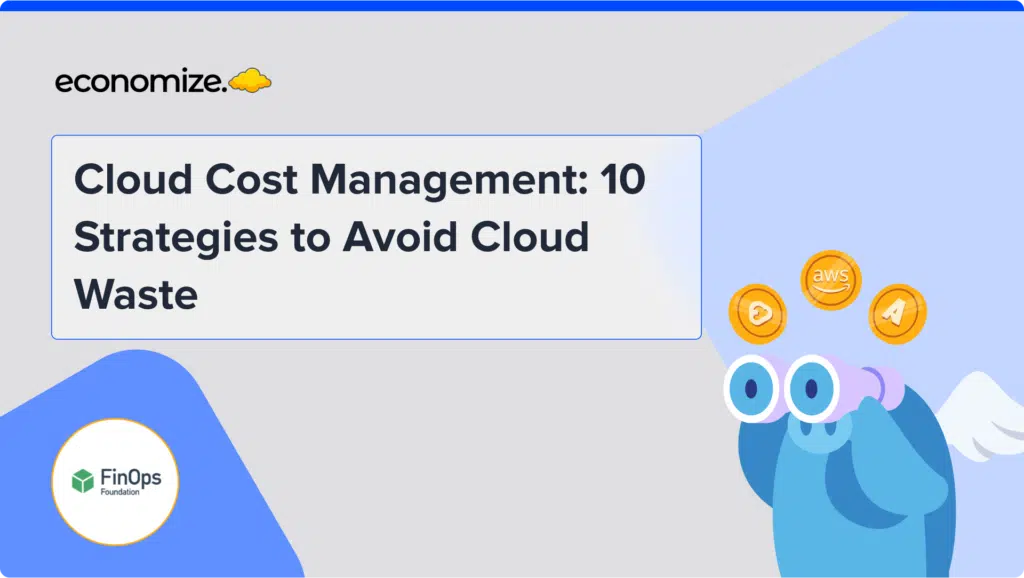Cloud cost optimization is critical for firms that use AWS, as it avails certain necessary benefits to organizations that run large workloads on the AWS platform. Following leading AWS cost optimization strategies enables users to leverage their cloud resources as efficiently as possible.
By implementing these strategies, companies can cut back on their total cloud spending and free up resources for other objectives. Native and third party tools also deliver significant, quantifiable benefits by providing additional features allowing users to track, report, monitor, and rectify over-expenditure.
Why is Cost Optimization important in AWS?
Having a cost-effective AWS infrastructure allows an organization to take full use of their cloud provider’s benefits, such as scalability, agility, flexibility, and security, and others. However, with challenges such as cost visibility, dispersion and wastage of resources, complicated pricing and invoicing, governance regulations, poorly managed installations, and incorrect estimates, it’s no wonder that several businesses are having difficulty fully embracing AWS.
The highest performance and dependability from your cloud infrastructure can be obtained by making optimal use of its resources. Furthermore, cost optimization would help you enhance your organization’s financial planning and budgeting procedures by giving you a better picture of your projected cloud expenses and allowing you to prepare appropriately.
In this article, we will discuss various leading strategies and cloud cost optimization tools for optimizing the cost of using AWS cloud services.
How to improve AWS performance and Cost Optimization
Achieving optimal performance and cost efficiency on AWS requires a multi-faceted approach. This involves rightsizing your compute instances to match workload requirements, leveraging cost-saving options like Spot Instances for fault-tolerant workloads, and implementing auto-scaling to meet fluctuating demand. Additionally, optimizing storage and network configurations, and effectively utilizing caching mechanisms can significantly improve application performance. By adopting a consumption model that pays only for used resources, and taking advantage of AWS Cost Explorer for detailed cost analysis, you can continuously identify and eliminate wasteful spending, ensuring a balance between peak performance and cost-effectiveness.
Top AWS Cost Optimization Strategies
By effectively implementing the strategies listed below, you can help to ensure that you are getting the most value out of your AWS resources and minimizing your overall costs.
Scheduling On/Off Times
When resources are not required, you can use scheduling to turn them off intelligently. You can plan for a development server, for example, to turn off outside of business hours when there is no operation required. By doing this, companies will avoid paying for the server’s inactive periods of operation.
- Taking advantage of pricing discounts offered by cloud providers for resources that are used consistently is a way to save intelligently with scheduling. AWS offers a discount for EC2 instances that are running for a significant portion of the month. By scheduling your instances to run consistently, you can take advantage of this discount and lower your overall costs.
- Scheduling can also help you save money by allowing you to take advantage of spot instances. Spot instances are extra computing resources that are accessible at a reduced cost but may be cancelled at any moment by the cloud provider. You may dramatically reduce your computing expenses by planning your workloads to run on spot instances during times of low demand.
In order to avoid having an adverse influence on the performance of your applications, scheduling the on/off periods for your resources requires careful preparation and monitoring. Additionally, it’s a good idea to periodically assess your scheduling tactics to make sure they still meet the demands of your company.
Optimize Auto Scaling Costs
Auto scaling can automatically deploy extra resources to support an application that gets a surge in traffic at particular times of the day and then scale those resources back down when demand returns to regular levels. By doing this, you could avoid the expense of maintaining excess capacity and guarantee that your consumers continue to receive high-quality service even during periods of high demand.
- Although auto-scaling can improve cost optimization, it needs careful planning and oversight to guarantee that it is being used efficiently.
- You must establish suitable scaling rules and thresholds, and you must periodically review and modify them as necessary.
- You must also keep an eye on your application’s performance to make sure that the scaling process is not having a detrimental effect on it.
By guaranteeing that you are not paying for unused capacity, auto-scaling enables you to scale your resources up or down in accordance with demand.
Using Reserved Instances
For instances that are used frequently, reserved instances offer considerable savings over on-demand pricing. You may save up to 75% with the on-demand pricing by agreeing to use a specific number of instances over a one- or three-year period. This can significantly reduce your instance prices, especially if you have a predictable workload that calls for a constant level of processing power.
The table below represents upfront discounts that are applicable depending on the number of reserved instances. Upfront and hourly discounts function as add-ons to your reserved instance discounts.
| Total Reserved Instances | Upfront Discount | Hourly Discount |
| < $500,000 | 0% | 0% |
| $500,000 to $4,000,000 | 5% | 5% |
| $4,000,000 to $10,000,000 | 10% | 10% |
| > $10,000,000 | Contact Amazon | Contact Amazon |
The way reserved instances save costs is by improving your ability to foresee and budget your cloud expenses. It becomes simpler to plan your budget and manage cloud expenditures when you purchase a reserved instance and know exactly the amount you’ll be billed for the entire time.
Selecting the Right Storage Tier
Various storage tiers are available at different pricing ranges, offering diverse degrees of performance and durability. Users can be sure that they are paying for the amount of performance and efficiency that you truly need by choosing the appropriate storage tier for their workload rather than overpaying for extra features.
Standard, infrequent access, and intelligent tiering are the three major storage tiers that Amazon Web Services (AWS) offers.
- The standard tier is appropriate for most workloads because it provides good performance and endurance at a reasonable cost.
- The infrequent access tier is appropriate for data that is accessed infrequently since it provides lesser performance and durability at a substantially reduced cost.
- Based on use patterns, the intelligent-tiering tier automatically shifts data to the most economical storage layer, enabling you to reduce storage costs without compromising performance.
- Users can utilize our Pricing Catalog to compare and contrast the pricing of different AWS services.
It’s crucial to keep in mind that choosing the appropriate storage tier necessitates a thorough analysis of your workload and usage habits. In order to make sure you are getting the most out of your investment, it is a good idea to periodically examine your storage tier consumption.
Reduce your Data Transfer Costs
For data that is transported across separate regions or between different services within the same area, AWS offers discounted data transfer rates. Users will benefit from these savings and reduce their overall data transfer expenses by transferring data between areas that are a part of the same data transfer region or within the same data transfer region.
Amazon CloudFront
By caching material at many locations around the world and enabling users to access information from a place that is closer to them, AWS CloudFront can assist in cutting data transfer costs by reducing the amount of data that has to be transported.
CloudFront can help companies save money by enabling them to use lower-cost data transport solutions. With CloudFront, you can send data across the AWS Worldwide Network, which has slower data transmission speeds than the open internet. Users can send data through private lines with CloudFront as well, which may result in even lower data transfer rates and cheaper data transfer costs.
To view the cost associated with each region, you can visit our Regions & Zones map that provides the corresponding instance pricing with each location.
Tagging and Labelling Resources
Users can classify and define their resources using tags and labels, which makes it simpler to keep track of and manage their expenditures. For instance, you can use tags to identify resources according to an application, environment, or billing region, which can help you gain visibility into how your resources are being used and how much they are costing per unit. The ownership and use of your resources can also be tracked using tags, which show you where cost-saving opportunities exist.
- By enabling you to create cost allocation and invoicing reports that are customized to your own requirements, tags, and labels provide gradually accruing savings.
- For instance, using tags to build customized reports that display the prices of particular environments or apps will help you find places where expenses can be reduced.
- Users can use tags to create AWS budgets and alerts that inform stakeholders when their expenditures are nearing or surpassing certain levels. This can help you keep track of your spending and take necessary corrective action.
Conclusion
In conclusion, there are many strategies that you can use to guide your AWS cloud cost optimization efforts. Some of the most effective strategies include scheduling on/off times for your resources, enabling auto-scaling, using reserved instances, selecting the right storage tier, reducing data transfer costs, using Amazon CloudFront, and tagging and labeling your resources.
Each of these strategies can help you optimize your costs in different ways, and by using a combination of these strategies, you can effectively manage your AWS cloud costs and ensure that you are getting the most value out of your investment.
Looking to Optimize your Cloud Costs?
Ready to transform your cloud economics? Don’t let runaway costs hold your business back. With Economize, you can effortlessly slash your cloud expenditures by up to 30%. Book a free demo with us today and discover how we can help you start saving in as little as 10 minutes.








